|


The Experiences
Experience The Experience Of Being
Buried Alive (June 14/8 PM: Los
Angeles, June 30/8 PM: Vancouver, July 8/7 PM: San Francisco)
Experience
The Experience Of An Illegal Space Race
(June 25/ 2 PM: Los Angeles)
Experience
The Experience Of Growing Money
(July 14/ 8 PM: San Francisco)
Experience
The Experience Of A Magnetism Party
(June 18/8 PM, Los Angeles)
Experience The Experience Of Catapulting Wireless
Devices (Workshop: July 9/6 PM; Event: July 16/2 PM, San Francisco)
Experience The Experience Of A Brick Of Coke
(June 21/8 PM: Los Angeles)
Experience The Experience Of 1 Baud
(Workshop: July 20/6 PM; Event: July 22/5 PM: San Francisco) |
|
|
Experience The Experience Of 1 Baud
|
The International Code of Signals serves to facilitate communication at sea. It defines the meaning of alphabetical identification codes for safety and navigation purposes. The key for "sending" was drafted by a committee of the British Board of Trade in 1855 and published in 1857. The 1969 edition, revised in 2003, is still in use today.
We have expanded the flag alphabet, not just so that it also includes the @ sign, but so that city dwellers have access to pure communication. The flag alphabet will be taught in a workshop lasting several hours. After a few days set aside for study and practice, we would like, in the form of a competition, to send an identical message across the city over two equally long routes simultaneously. Will it work?
San Francisco (RxGallery):
Workshop: July 20, 6 PM.
Event: July 22, 5 PM.
|
Send The Message
July 22. Afternoon.
We think it would be nice to wear a sailor's outfit for the presentation of 'Experience The Experience Of 1 Baud'.
Coincidentally there's a specialized dealer just around the corner.
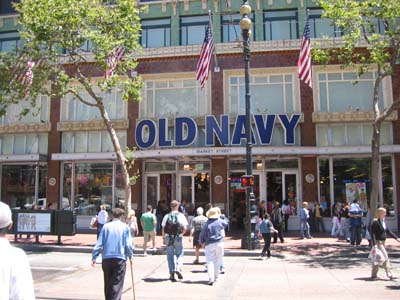
Oh no! We're highly disappointed! No naval uniforms! Not a single one!
But at least we can buy a couple of white shirts.
4 PM:
Warm up!
Internal checksum.
Status: 95%.
Soon the in/out crowd will show up.
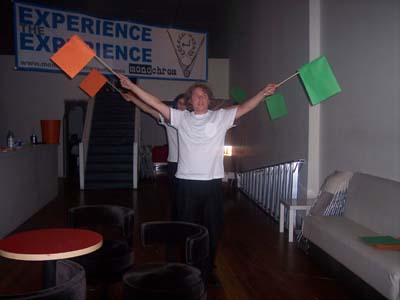
5:30 PM:
Signalling volunteers arrive.
"Good afternoon, ladies and gentlemen! The medium is the message. And the message is probably love. Or maybe not! Let's get it started! First we'll administer a couple of initial tests."
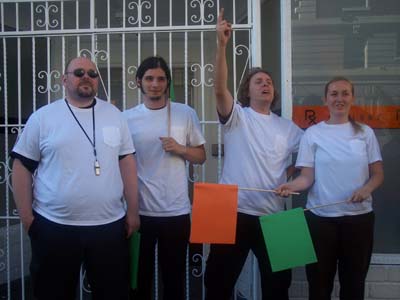
Protocol test.
Status: 35%.
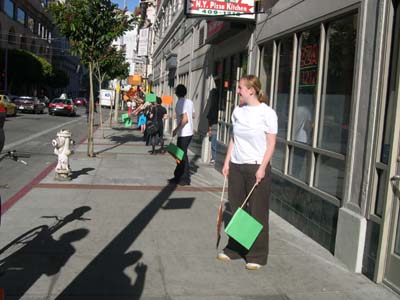
Negotiating test.
Status: 15%.
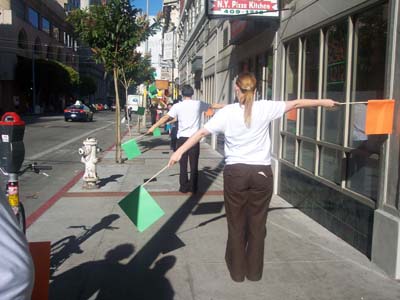
Transfer test.
Status: 85%.
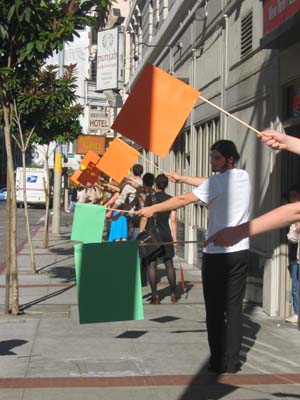
Communication is the process of exchanging information via a common system of symbols.
Message in its most general meaning is the object of communication.
We want to establish pure urban communication.
Distance: 3-4 blocks.
Will it work?
Anika, located at RxGallery, sends a character-by-character message to Daniel.
Daniel is the first semaphore node, located corner Eddy St/Mason St.
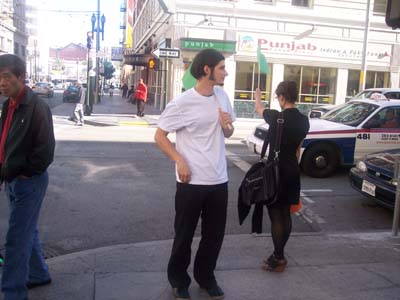
Daniel transmits the message to the next person in line.
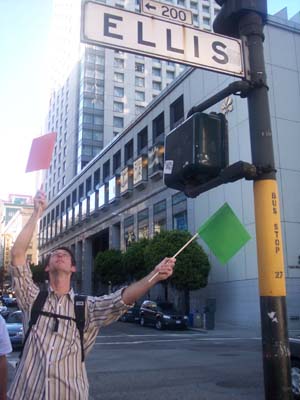
"Roger!"
The flags are held, arms extended, in various positions representing each of the letters of the alphabet.
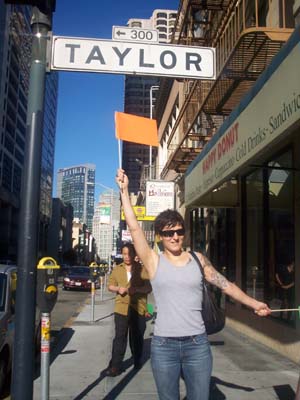
"Roger!"
The pattern resembles a clock face divided into eight positions...
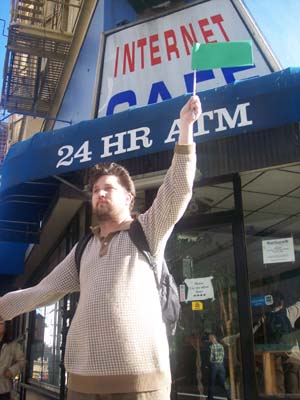
"Roger!"
... up, down, out, high, low, for each of the left and right hands (LH and RH) six letters require the hand to be brought across the body so that both flags are on the same side.
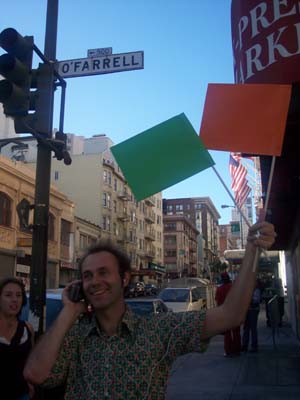
"Roger!"
In the first circle, the letters A to C are made with the right arm, and E to G with the left, and D with either as convenient.
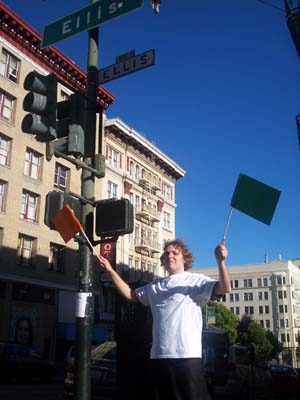
"Roger!"
In the second circle, the right arm is kept still at the letter A position and the left arm makes the movements; similarly in the remaining circles, the right arm remains fixed while the left arm moves. The arms are kept straight when changing from one position to another.
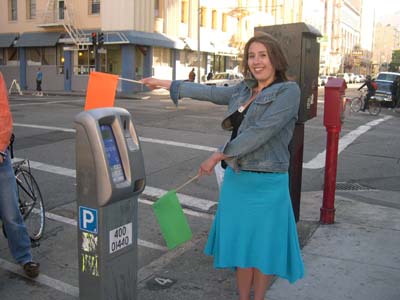
Average flagging distance / zoom off.
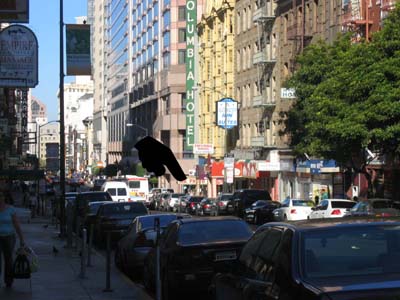
Average flagging distance / zoom on.
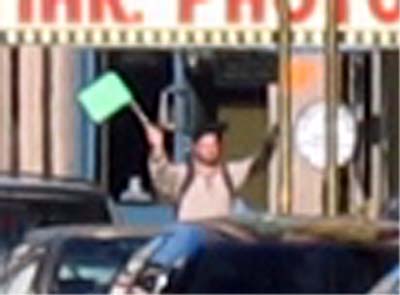
The first twenty characters of Anika's message are out on their way through city space...
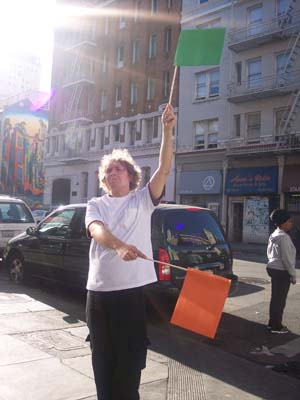
...but a couple of problems occur.
A) Large distance between nodes.
B) Bad visibility.
C) No stop/resume protocols defined.
D) Low noise: e.g. people asking us what we do.
E) High noise: e.g. people calling members of the line "flag freaks" who should leave "my corner" and attacking the nodes. To quote French philosopher Michel Serres: "Maintaining a dialog means postulating a Third and attempting to exclude him. Successful communication is the successful exclusion of this Third. At another point we have referred to this Third as the demon, personified noise."
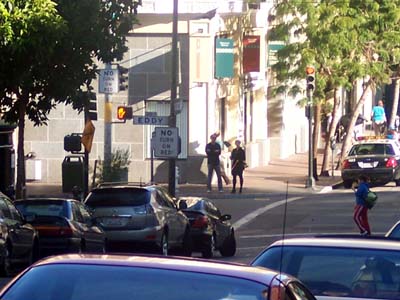
Günther is stirred up!
"We have to stop! This is a farce! We have to shorten the distances and define a clear setting of stop and start bits!"
He is definitely right.
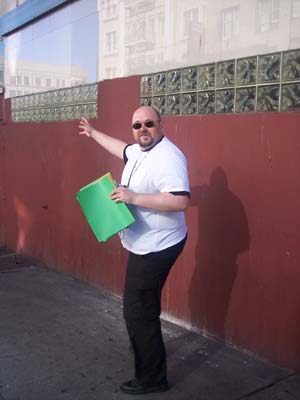
A) There is no 'end transmission' command.
B) The line of communication is broken, anyways.
We have to switch to P2P cyclist mode to bring the people back to RxGallery.
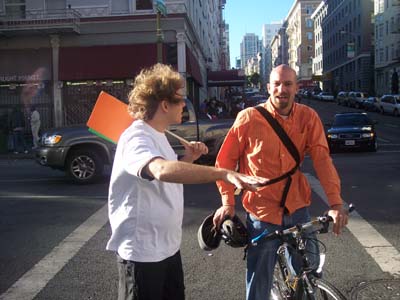
Group resetting.
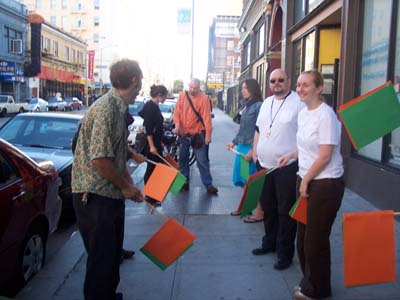
We define new I/O commands.
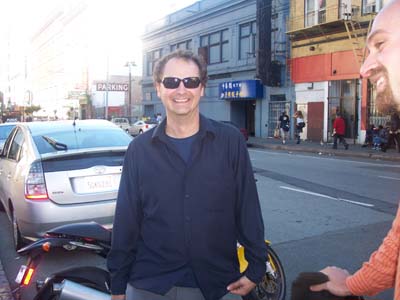
We implement new I/O commands.
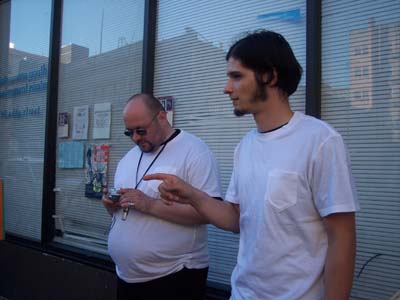
We compile new I/O commands.
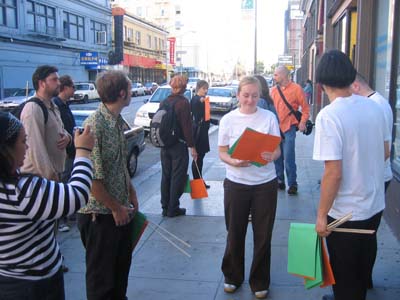
We run new I/O commands.
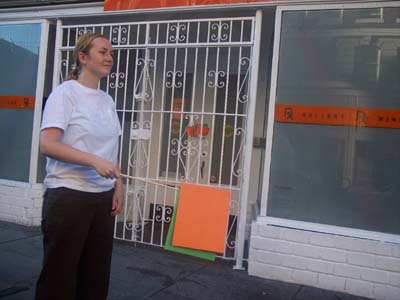
Sender: Anika.
Location: RxGallery.
First node.
Location: Corner Eddy St/Mason St.
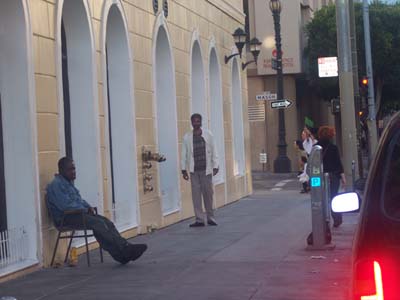
Last node.
Location: RxGallery.
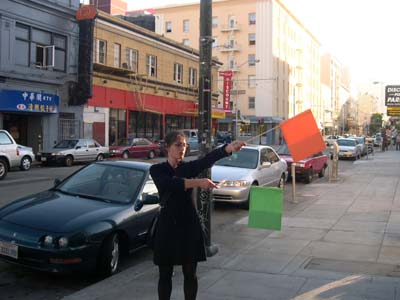
The message isABIGSPIDERBITEMEHERE [*] Anika sends out all 20 bytes:ABIGSPIDERBITEMEHERE 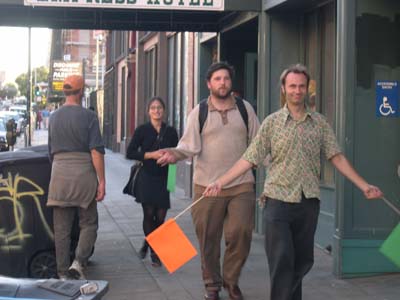
The communication line is closed. But only 13 characters are transmitted back to the origin.
Günther takes digital pictures of all inbound bytes.
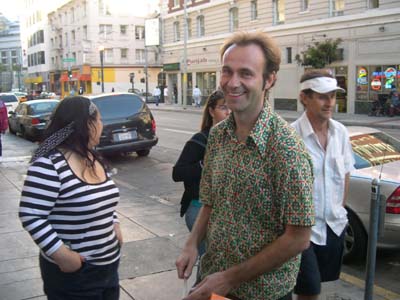
Returning nodes.
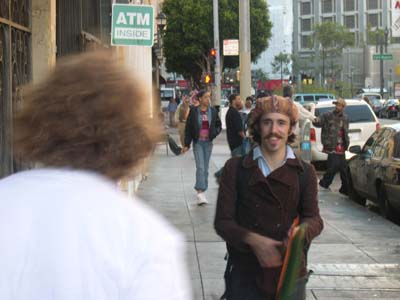
Only 13 bytes came back but the group experiences a sense of achievement.
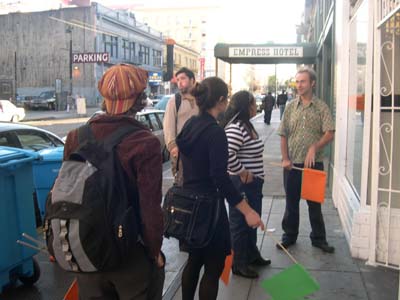
Anika analyzes the symbols.
The inbound message isGMQICFRFIUCSC Not a single character is right.
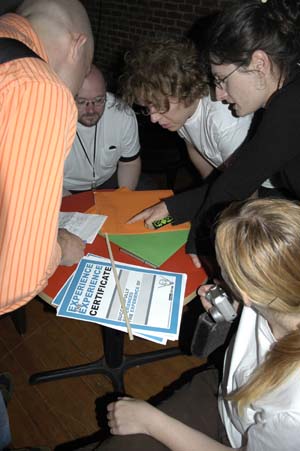
Let's face it:
The acceptance of noise as a universal form of communication and as a media-specific characteristic does not mean seeing noise as null information, but as metainformation.
It is the same in information theory, where noise represents the maximum value of null information, which at the same time is undecidable from the opposite pole of absolute information (which theoretically would avoid all redundancy). Thus both information theory and television work with redundancy, on the one hand in order to make possible any sort of communication or broadcast at all, and on the other hand in order to suppress noise as the fundamental frequency of our interaction.
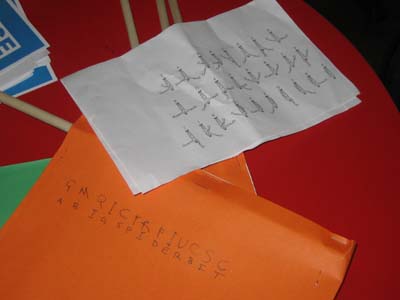
Anika writes out the 'Experience The Experience' certificates.
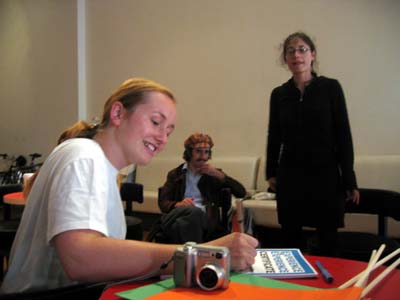
Was it 1 Baud?
No!
But there's no 0.000000004 Baud.
July 22. Evening.
Scott Beale spots Eddy, one of our brave nodes, at the release party of 'High Fructose' @ Varnish Fine Art. Eddy still tries to send a message.
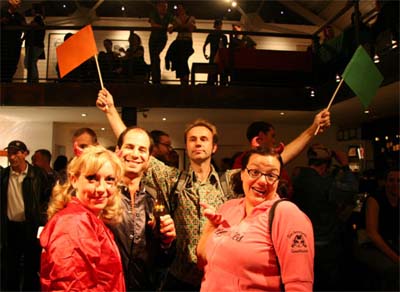
[*] This sentence was part of one of the first conversations we had in San Francisco after arriving at RxGallery. Some guy wearing a Jesus tshirt asked us for a couple of dollars: "I'm so hungry, I want to buy some chicken,... a big spider bite me here [stomach] if I don't buy chicken."
In the end, we gave him three dollars, and he bought a bottle of cheap rum.
[posted by johannes at
4:54 AM]
Semaphore: Testing And Practicing
July 15. Afternoon.
We drive to Emeryville, CA.
At Home Depot we obtain a couple of wooden sticks...
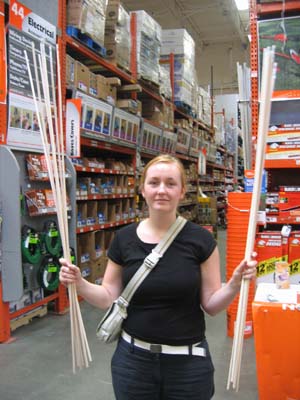
...and at Office Max we find colored envelopes, proper stuff for making a bunch of semaphore flags.
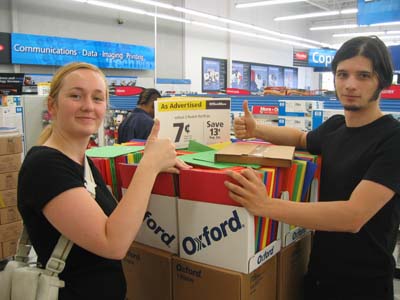
July 16. Midday.
We feel honored to hear that we are invited to present 'Experience The Experience Of 1 Baud' at Dorkbot SF on July 20.
Foremost Bay Area artists and DIY freaks will turn up.
Everything has to be double tested.
We even need double tests of the double tests!
July 17. Late afternoon.
Unfortunately, the weather situation in San Francisco is unbearable.
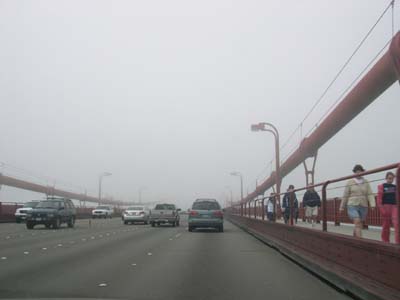
It's foggy and wet.
We need to go to an adequate testing area.
July 17. Afternoon.
We drive to Nevada.
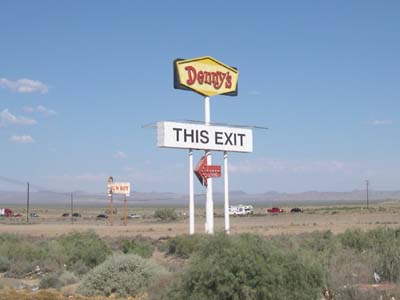
July 18. Midday.
We arrive at the Hoover Dam.
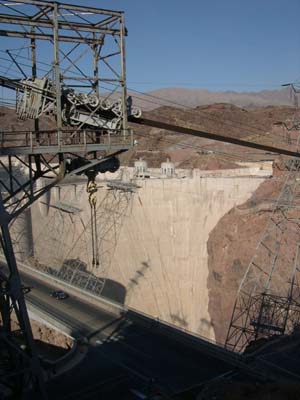
Damn dam!
Semaphore testing is prohibited!
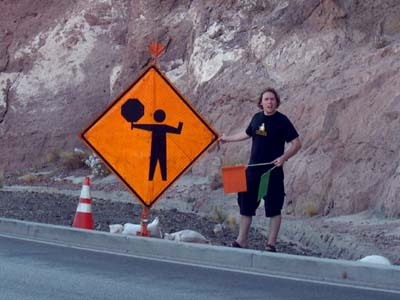
We cross the dam...
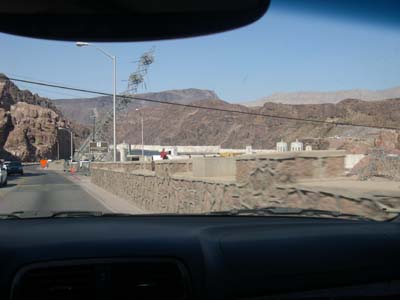
...and enter a land called 'Arizona'.
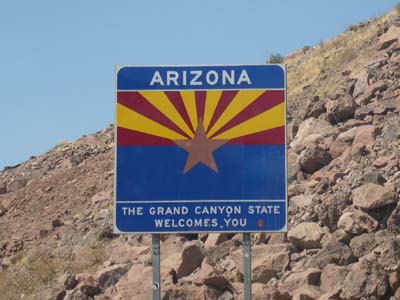
We have to reset our on-board clock to a new time zone.
And it's 119 degrees Fahrenheit (49 degress Celsius) outside. And it still gets hotter!
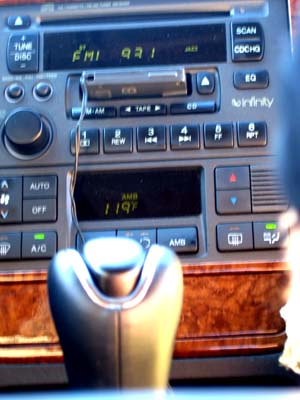
Johannes shouts: "The only way we will get through this is if we push forward! We have to find a suitable hill!"
Daniel accelerates and we drive a couple of more miles.
We finally stop.
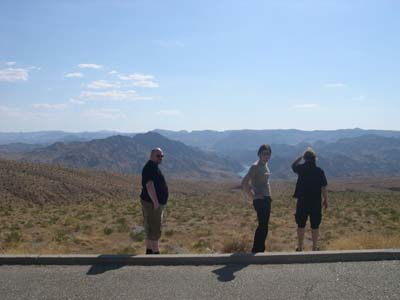
The heat is crushing.
But we boldly go where no flag communicator has gone before.
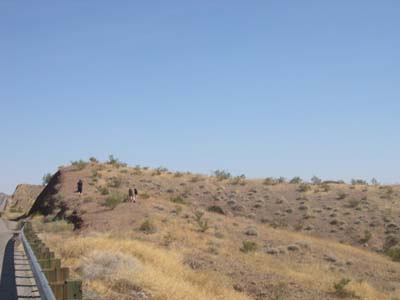
The wind is hideously dry and we have to take our photographs against the sun.
But we can't back off now! And at least the Colorado River is on the pictures.
''A''
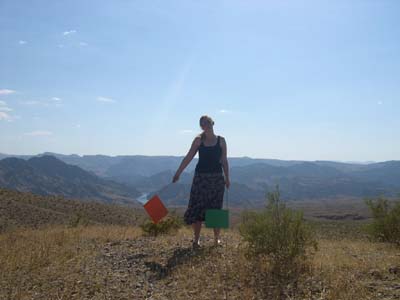
''B''
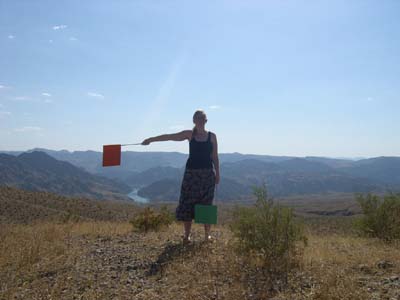
''C''
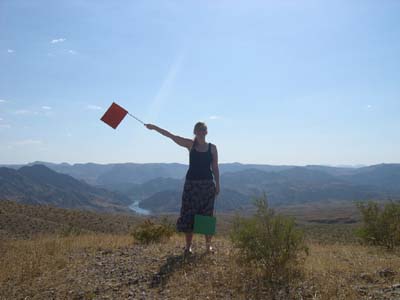
''D''
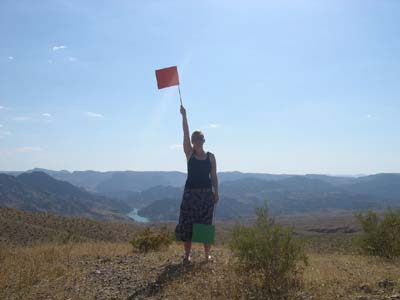
Anika tries...
''E''
...but the wind is too strong and bends the flags. The green flag should face into the other direction!
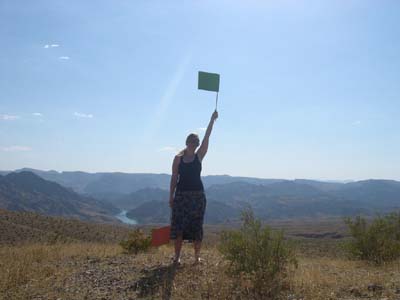
''F''??
Anika: "I can't remember the F!"
Daniel can't remember the letter, either!
Johannes complains about the absence of liquid in his mouth.
Günther nearly stumbles over a small cactus.
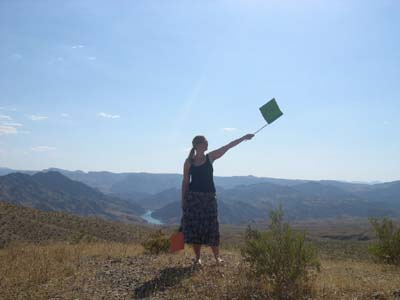
''G''??
Anika's face turns red.
Her cardiovascular systems reports problems.
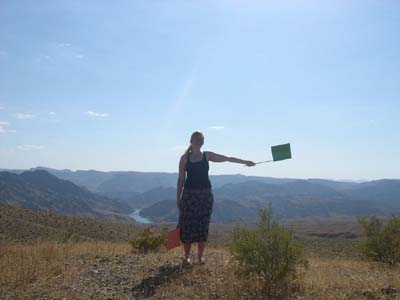
''H''??
Güther gets dizzy and Johannes has problems with his contact lenses. They are completely dry and tend to drop out.
The metal case of the camera heats up. Daniel can't hold it any longer.
It is useless.
We abandon the procedure after 7 minutes and run for our lives.
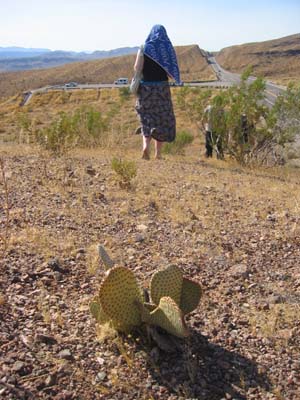
We jump into our car...
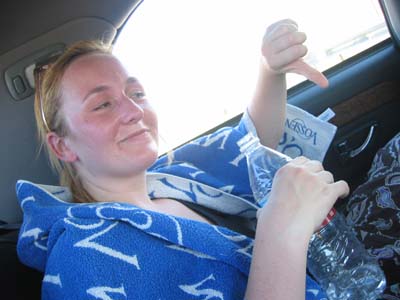
...turn the AC to max...
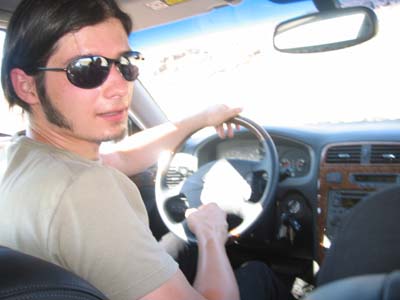
...and flee in vain.
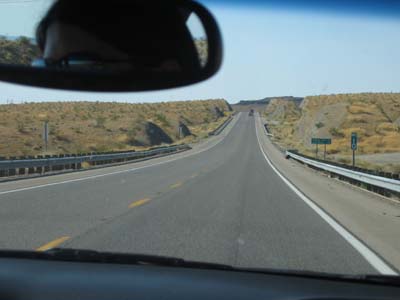
We are chipped.
But we have to finish our mission!
And any taser-swinging security officer is easier to handle than the forces of the desert!
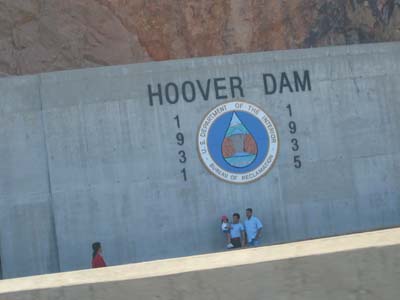
Anika tries to signal the ''K''.
But she can't remember ''G'', ''H'', ''I'' and ''J''.
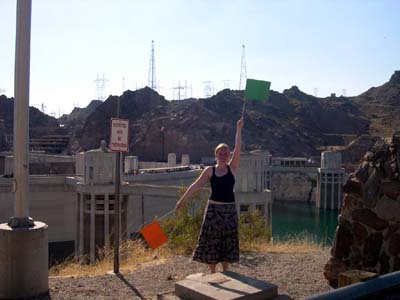
Oh no! It is nearly as hot as twenty miles away!
A couple of tourists stare at us. They are from Kansas. We arouse suspicion.
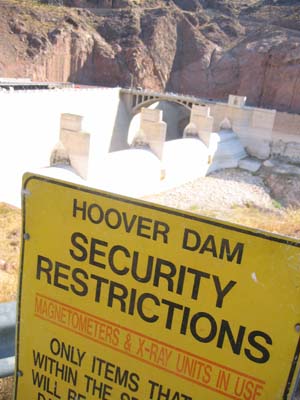
And a security car approaches the scene!
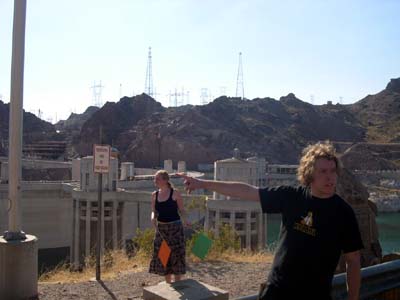
We take refuge to Nevada.
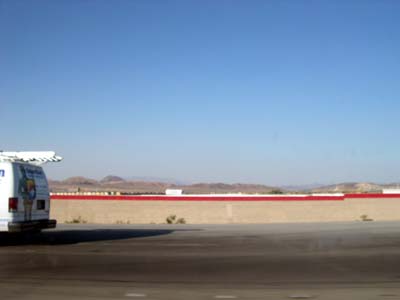
July 18. Evening.
Las Vegas is just round the corner...
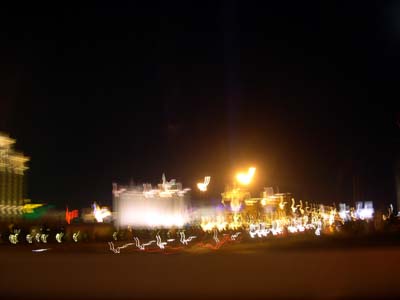
...but we are not in the mood.
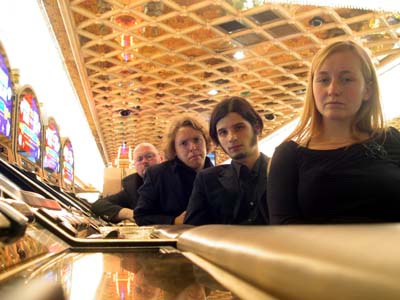
July 19.
We go to Denny's and drive back.
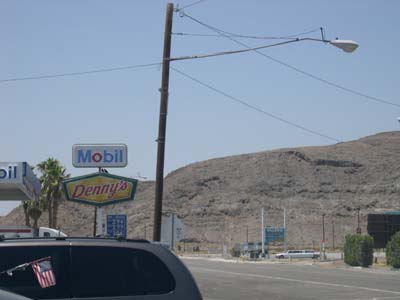
Beloved San Francisco!
It stinks like piss but the weather is cold and foggy.
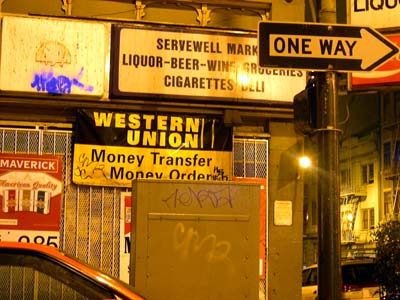
July 20. Morning
Just a couple of hours left. We have to finish the semaphore pictures for the Dorkbot presentation!
We decide to take them in our kitchen. But the kitchen is too small.
Daniel climbs out of the window on the roof and shoots from outside.
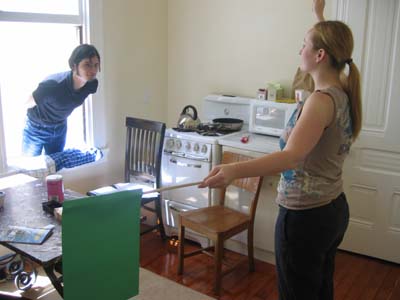
''A'' to ''D'' seem fine so Anika resumes with ''E''...
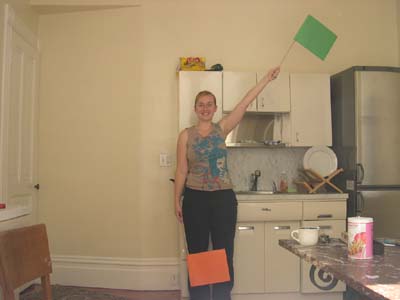
''F''
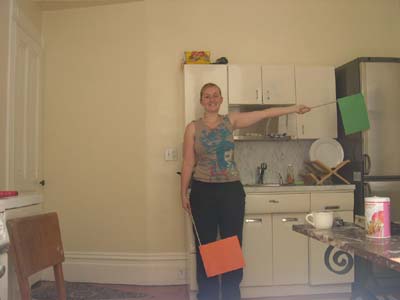
''G''
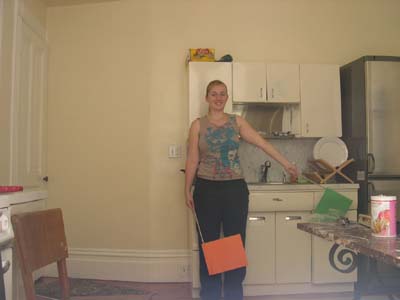
''H''
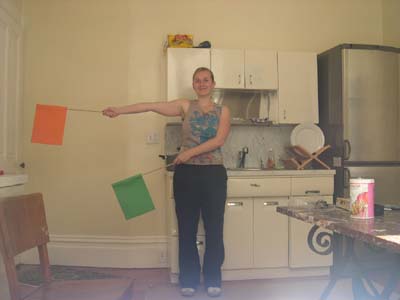
''I''
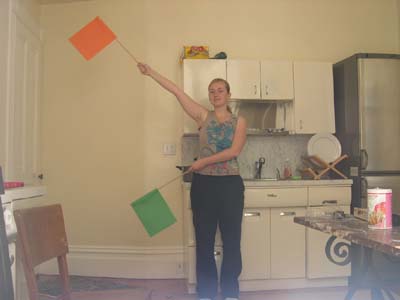
''J''
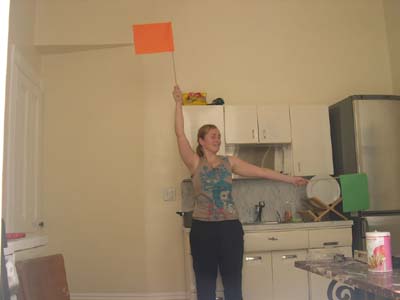
''K''
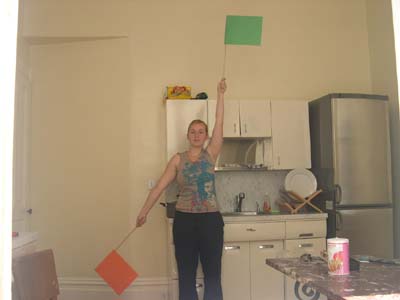
''L''
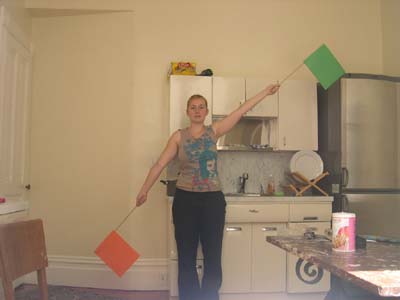
''M''
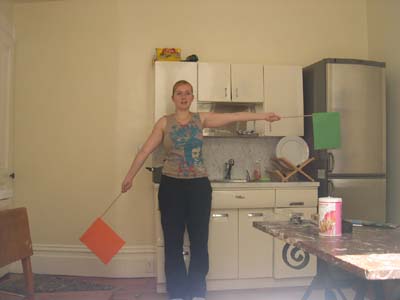
''N''
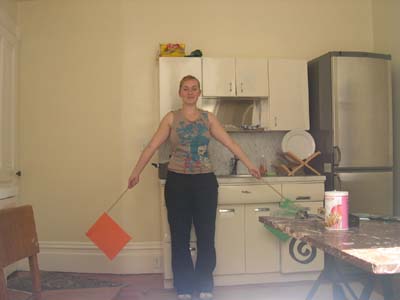
''O''
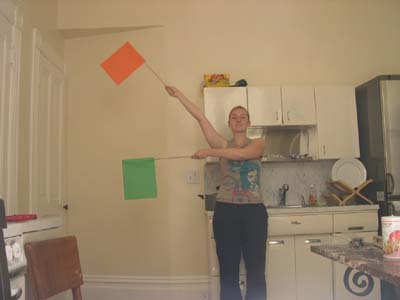
''P''
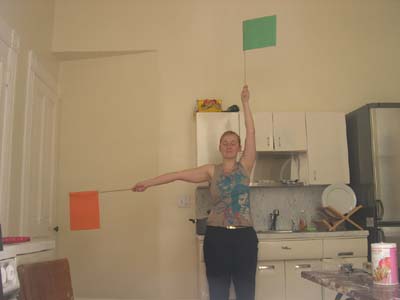
''Q''
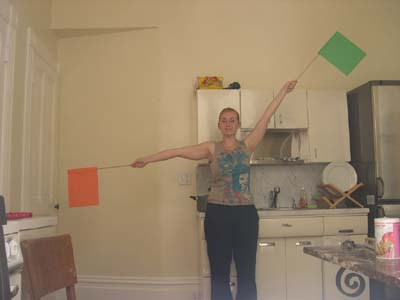
''R''
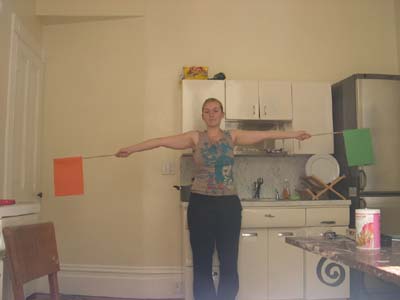
''S''
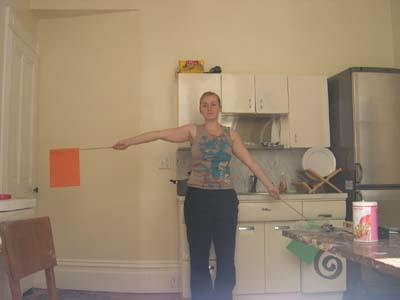
''T''
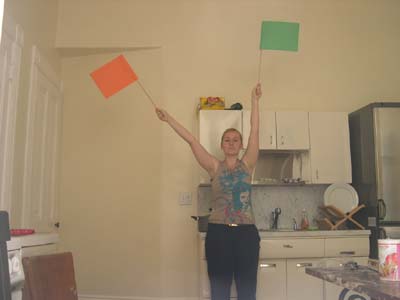
''U''
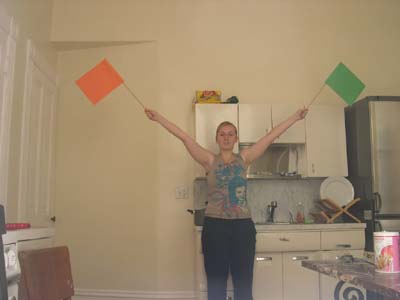
''V''
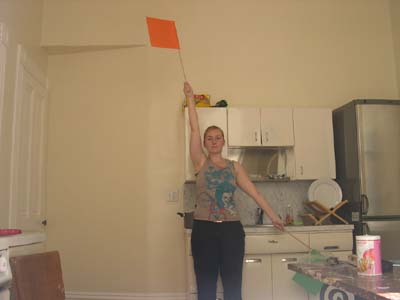
''W''
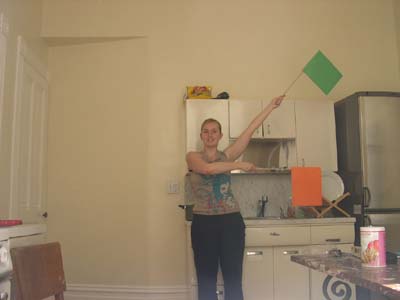
''X''
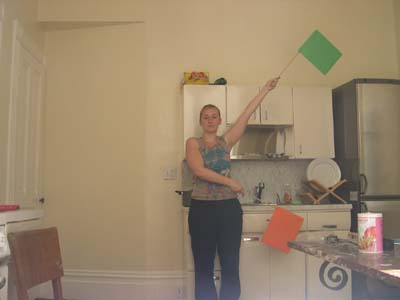
''Y''
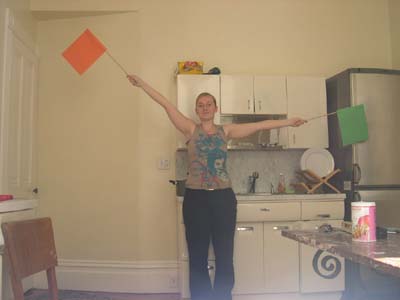
''Z''
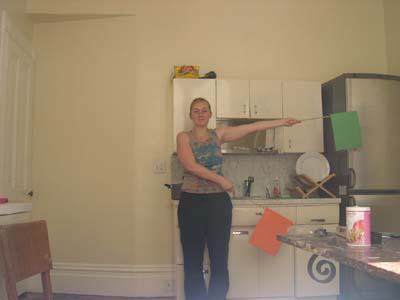
Johannes, our quality assurance assistance, is auspicious.
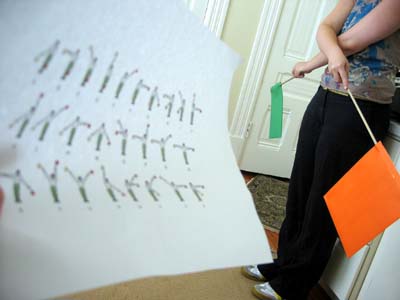
We have expanded the flag alphabet. Now it includes the @ sign.
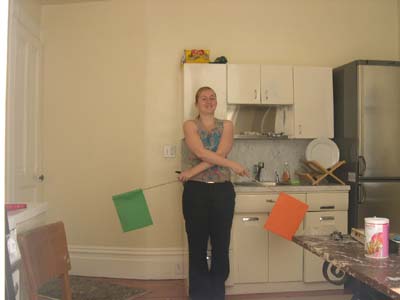
We are still working on the dot.
July 20. Afternoon.
Semaphore flags work.
Anika and Daniel go into mass production.
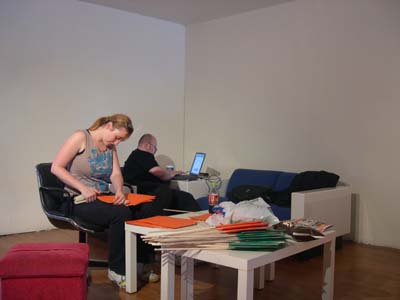
Hardcore stapling.
Countdown T-1 hour to Dorkbot meet-up.
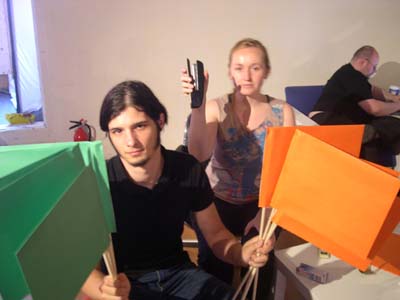
7:30 PM.
The regular crowd shuffles in.
But we are no piano men, they don't put bread in our jars.
First Otis Fodder and TradeMark G. talk about theremins.
Afterwards Johannes gives an intro about monochrom and some of our projects.
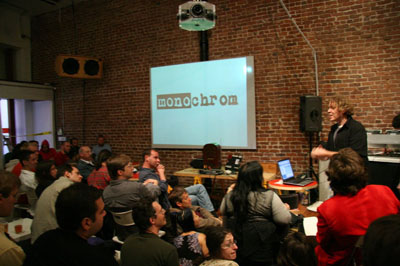
Finally we present 'Experience The Experience Of 1 Baud'.
What is a semaphore? How was it used?
Anika talks about the historic background.
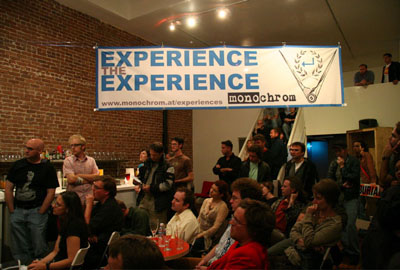
The semaphore line is a signalling system invented by the Chappe brothers in France.
Claude Chappe began development when he and his four brothers lost their livelihoods because of the French Revolution. They determined by experiment that it was easier to see the angle of a rod than determine the presence of a panel. Their system was composed of black movable wooden arms, the position of which indicated alphabetic letters. The Chappe system was controlled by only two handles, and was mechanically simple, and reasonably rugged.
Each of the two arms showed seven positions, and the cross bar connecting the two arms had four different angles, for a total of 196 symbols (7x7x4).
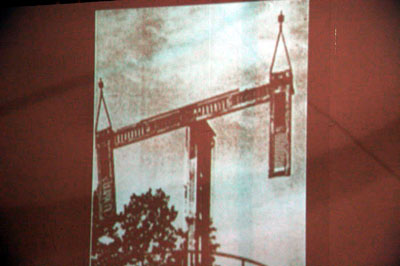
The first semaphore line was established between Paris and Lille in 1792. It was used to carry dispatches for a war between France and Austria.
The first symbol of a message to Lille would pass 120 miles through 15 stations in only nine minutes. The speed of the line varied with the weather, but the line to Lille typically transferred 36 symbols, a complete message, in about 32 minutes.
The system was widely copied by other European states, especially after it was used by Napoleon to coordinate his empire and army. In most states, the postal union ran the semaphores.
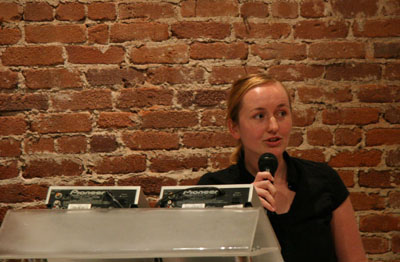
Semaphores were adopted and widely used (with hand-held flags replacing the mechanical arms) in the maritime world in the early 1800s. It had several advantages over post roads. It could easily travel at several thousand miles per hour. And with large signals and a telescope, the distance between stations could be as much as 20 miles, over mountain ranges and bad terrain, reducing investment and the number of stations over other forms of communication.
The semaphores' disadvantages were that they were affected by weather, especially fog and rain, and they could be read by anyone with training.
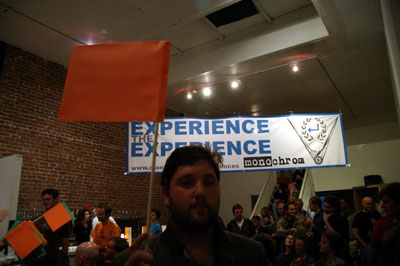
But how will it work on Friday, here in San Francisco?
Easy.
We start with the workshop.
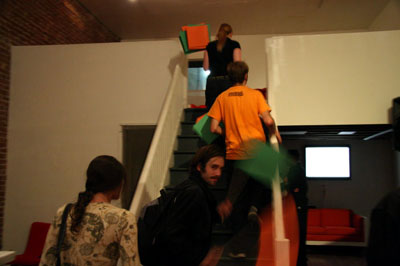
(No, it's no step aerobic lesson!)
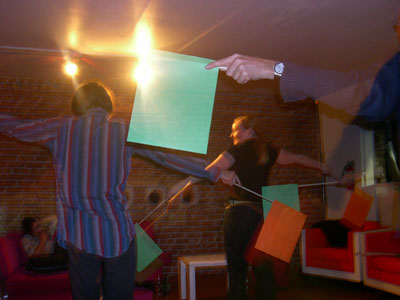
A couple of folks are highly interested in participating in our flag communication line of Friday, July 22.
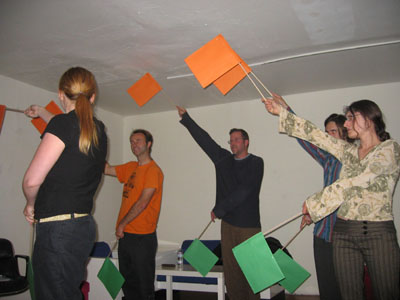
''Y'', ''M'', ''C'', ''A''.
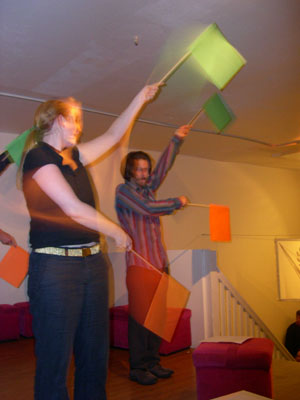
There's some homework to do... but team leader Anika is highly optimistic.
(Workshop pics by Laughing Squid, Karen Marcelo and Jake Appelbaum. Thanx.)
[posted by johannes at
3:26 PM]
Experience The Experience Of 1 Baud
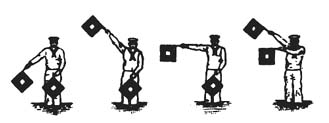
[posted by johannes at
2:08 AM]
|